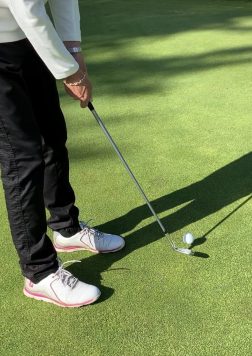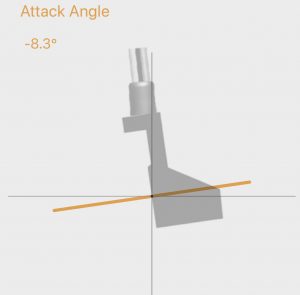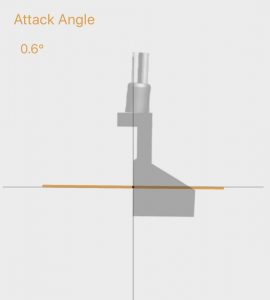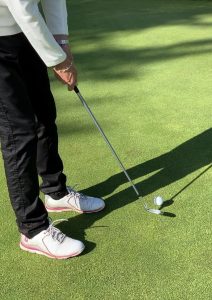
Putting Drills
Putting is an area of the game which as we all appreciate is one of the most critical it is also the most precise.
The use of technology now is well publicized but it is the actual interpretation of the numbers with a corresponding drill which achieves improvement. I am using a hole more putts plate which provides me with enough data for my everyday coaching in addition to my brilliant http://www.puttout.golf mirror. This in tandem allow me to diagnose and provide effective putting drills.
One requirement when putting is the angle at which the putter strikes the ball, we are looking for a fairly neutral “level” contact. The angle at which the putter head strikes the ball determines the “true roll” which ultimately affects our ability to control distance consistently minimizing any unwanted spin.
In simple terms the analogy I use is to imagine banging a tack into a wall you would not strike the tack on the upswing or a vertical descending blow. I would be looking for a level strike with the hammer.
During a recent putting lesson one client displayed the strike angle shown in the image below.

After a few practice drills using the chip putt or bellied wedge with the Sand wedge the results displayed in the data image below were astounding.

Here is the “Chip Putt drill” which I used, it is also the ideal indoor winter putting drill practice so no excuse! the advantage is no divots can be taken from the carpet!
Using a Sand wedge hover the club above the equator of the ball, the idea is to strike the ball with the bottom (bounce) of the club. If your stroke continues on a level path with no upward or downward movement the ball will run in contact with the green with no elevation.

If there is any vertical movement in the stoke the ball will characteristically “chip” with slight elevation identifying a downward strike which is what we are trying to avoid.
Why not give this a try noticing the difference in roll the next time you play “Roll that ball low and true” SBG





